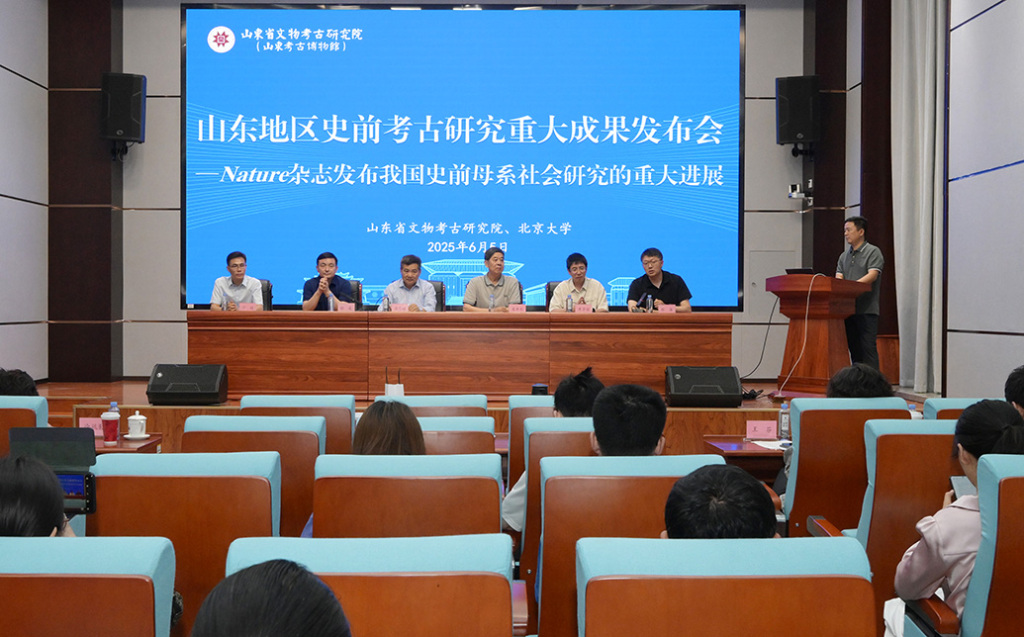
Although we are familiar with the term "matriarchal society", archaeology has always lacked strong evidence to support the existence of prehistoric matriarchal society. Recently, Peking University and Shandong Provincial Institute of Cultural Relics and Archaeology jointly conducted a multidisciplinary cross-disciplinary study, based on high-resolution ancient DNA kinship identification technology, and for the first time empirically confirmed the village organization composed of two matriarchal clans in the Dawenkou culture 4750 years ago. The relevant paper was published online in Nature on the evening of June 4.

The scene of the press conference on major achievements in prehistoric archaeological research in Shandong Province, photographed on June 5. Photo by Xinhua News Agency
On June 5, Ning Chao, a researcher at the School of Archaeology and Museum Studies of Peking University, introduced at the Shandong Prehistoric Archaeology Research Major Achievements Conference that, unlike the traditional research method based on skull morphology, DNA technology can reconstruct the structure of prehistoric society. mtDNA (mitochondrial DNA) is unique to women and is inherited unidirectionally from the mother, while the Y chromosome is unique to men and is inherited unidirectionally from the father. A basic feature of a matriarchal society is that women have low mtDNA diversity, while men have high Y chromosome DNA diversity.
The Fujia site in Shandong is a late Dawenkou culture site. Archaeologists have previously discovered two independent tomb groups in the north and south regions. Based on ancient DNA shotgun sequencing and capture enrichment technology, the research team successfully obtained whole genome data from 14 individuals from the northern cemetery and 46 individuals from the southern cemetery. Genetic analysis showed that the burial division showed a significant correspondence with maternal genetic characteristics: all individuals in the northern region belonged to the mtDNA haplogroup M8a3, and their mitochondrial DNA sequences showed complete consistency; 44 individuals in the southern region (accounting for 95.65%) belonged to the D5b1b haplogroup, and also showed completely consistent mtDNA sequence characteristics. This unified maternal inheritance pattern strongly suggests that the populations in the two cemeteries originated from different single maternal ancestors. It is worth noting that in sharp contrast to the high homogeneity of maternal inheritance, the distribution of Y chromosome haplotypes in the two cemeteries showed significant diversity.
Based on the scale of the cemetery, its duration, the complete homogeneity of the maternal haplotype and the high diversity of the paternal haplotype, the team inferred that the two cemeteries at the Fujia site should belong to a matriarchal social structure.
This study used molecular anthropology and genetic evidence to not only confirm for the first time the existence of prehistoric matriarchal social organization, but also comprehensively revealed key information such as the society's organizational characteristics, population size, livelihood patterns and productivity levels, achieving a major breakthrough in the study of early human social organization.
Lyu Houyuan, a researcher at the Institute of Geology and Geophysics of the Chinese Academy of Sciences, believes that this study has built the first Neolithic matriarchal society model based on systematic genetic data for the international academic community, contributing a Chinese solution to the study of human civilization.
(Original title: "Chinese scholars confirm the existence of prehistoric matriarchal clans for the first time")